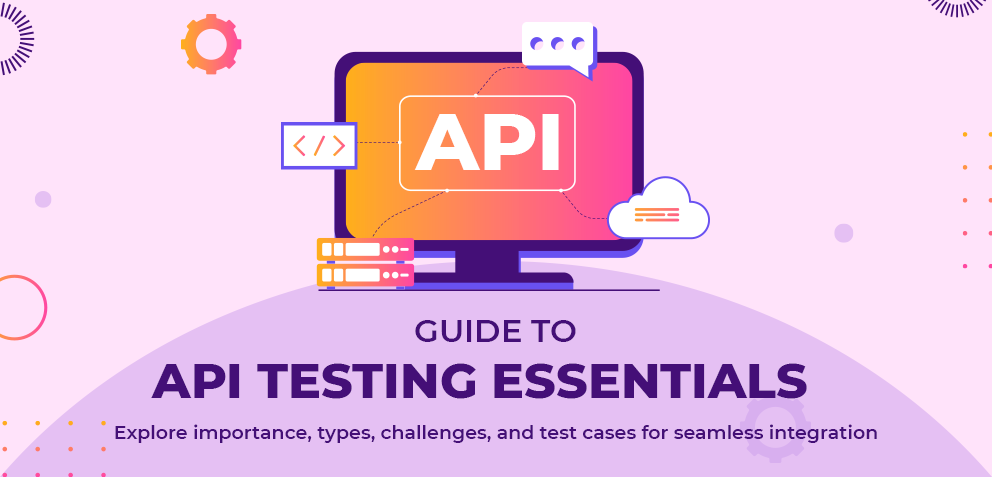In the digital age, the ability to write content that not only captivates readers but also appeals to search engines is more crucial than ever. SEO Content Writing is a skill set that flips the coin on traditional writing, combining the art of engaging, informative prose with the science of search engine optimization. This convergence ensures that your content not only reaches its intended audience but also ranks well on search engine results pages (SERPs), driving organic traffic to your website or blog. Understanding the basics of SEO content writing is fundamental for anyone looking to make an impact online, from digital marketers to bloggers and content creators. This guide will provide you with essential tips, strategies, and knowledge needed to craft content that both your readers and search engines will love.
Introduction to SEO Content Writing
SEO content writing is a strategic approach designed to create content that is not only engaging and informative to the reader but also optimized for search engines. The objective is to enhance online visibility and attract more traffic to a website by ranking higher in search engine results. Understanding the basics of SEO content writing is essential for anyone looking to improve their website’s performance or embark on a career in digital marketing or content creation.
At the core of SEO content writing are keyword research and incorporation, content organization, and quality content creation. Here’s a brief overview:
-
Keyword Research and Incorporation: This involves identifying and using relevant search terms that people are typing into search engines to find information. Keywords should be naturally incorporated into titles, headings, meta descriptions, and throughout the article to signal to search engines what the page is about.
-
Content Organization: A well-structured content layout helps search engines understand your website better. Using headers (H1, H2, H3) to organize content, creating short paragraphs, and incorporating bullet points or numbered lists can enhance readability and SEO.
-
Quality Content Creation: Above all, the content must provide value to the reader. High-quality, engaging, and original content is prioritized by search engines and helps to establish authority and credibility in your niche.
Grasping these fundamental principles is the first step towards mastering SEO content writing and leveraging content to achieve your digital marketing goals.
Understanding the Purpose of SEO Content
SEO content, at its core, is crafted to improve a website’s visibility in search engines. This increased visibility aims to attract more visitors, converting passive browsers into active users, customers, or followers. The primary purposes of SEO content can be broken down into the following key areas:
-
Attract Search Engine Traffic: By optimizing content with relevant keywords, phrases, and answering the queries that potential visitors are searching for, SEO content aims to rank higher in search engine results pages (SERPs). This high ranking increases the likelihood of clicks from users.
-
Engage Readers: Beyond attracting visitors, SEO content must be engaging and valuable to the reader. It should provide the information they are searching for, solve their problems, or answer their questions. High-quality content encourages visitors to spend more time on your website, reducing bounce rates and indicating to search engines that your site is a valuable resource.
-
Convert Visitors into Customers: Effective SEO content doesn’t just attract visitors; it persuades them to take action. This could be signing up for a newsletter, making a purchase, or requesting more information. By targeting specific stages of the buyer’s journey with tailored content, businesses can guide visitors towards conversion.
-
Build Authority and Trust: Consistently publishing expert, authoritative, and trustworthy content helps build your brand’s reputation. Over time, this reputation contributes to higher rankings in search results, as search engines favor sites recognized as reputable sources of information.
Understanding the intricacies of SEO content and its purposes allows writers and marketers to create strategic, impactful content that not just garners traffic but fosters engagement, conversion, and brand loyalty.
Using Keyword Research to Optimize Content
Keyword research is a critical step in SEO content writing that involves identifying the terms and phrases your target audience uses when searching for information, products, or services related to your content. The goal is to incorporate these keywords naturally into your content, making it more visible and relevant to search engines and users.
-
Start with a Keyword Tool: Utilize keyword research tools like Google Keyword Planner, Ahrefs, or SEMrush. These tools provide valuable insights into keyword volume, competition, and relevance.
-
Focus on Long-Tail Keywords: Long-tail keywords, which are longer and more specific phrases, tend to have lower competition and higher conversion rates. They allow you to target niche demographics more effectively.
-
Analyze Search Intent: Understanding the intent behind the search queries—whether informational, navigational, transactional, or commercial—can guide the content’s tone, structure, and information.
-
Incorporate Keywords Strategically: Keywords should be integrated into titles, headings, subheadings, meta descriptions, and throughout the content body. However, avoid keyword stuffing, as this can negatively impact readability and SEO.
-
Monitor and Refine: SEO is not a one-time effort. Regularly review your keyword performance and adjust your content as needed to improve rankings and meet the evolving interests of your audience.
By carefully selecting and implementing the right keywords, you can enhance your content’s visibility, engage your target audience more effectively, and achieve your SEO goals.
Creating High-Quality and Relevant Content
For SEO content writing, producing high-quality and relevant content is paramount. This requires a deep understanding of your audience’s needs and preferences, ensuring that every piece of content is tailored to meet those demands. Here are several key points to consider:
-
Research Your Audience: Understand the demographics, interests, and challenges of your audience. This knowledge can shape your content to be more engaging and useful to your readers.
-
Keyword Research: Identify the keywords that your target audience is using to search for information. Incorporating these keywords naturally into your content can improve its visibility and relevance.
-
Value and Uniqueness: Your content should provide real value to your readers, offering them unique insights, solutions, or information they can’t easily find elsewhere. This could be through detailed guides, comprehensive research, or expert opinions.
-
Engagement and Readability: Make your content easy to read and engage with. Use headings, bullet points, and short paragraphs to break down information. Incorporating multimedia elements like images, videos, and infographics can also enhance the user experience.
-
Regular Updates: The digital landscape is ever-evolving. Keeping your content updated with the latest information and trends can help maintain its relevance and value over time.
Focusing on these elements can dramatically increase the effectiveness of your SEO content writing, making it a powerful tool in attracting and retaining your intended audience.
Using Proper Formatting and Structure
In the realm of SEO content writing, the organization of your article plays a crucial role in not only keeping your readers engaged but also in improving its visibility to search engines. Proper formatting and structure can significantly enhance the readability and SEO friendliness of your content. Here are some key aspects to focus on:
Headings and Subheadings
- Use H1 tags for your title to make it clear what your content is about.
- Break your content into sections with H2 and H3 tags as appropriate. This helps search engines understand the hierarchy and main points of your content.
Paragraphs
- Keep paragraphs short, ideally 2-3 sentences, to improve readability on digital devices.
- Start with the most important information (inverted pyramid style), making it easier for readers to skim.
Bullet Points and Lists
- Use bullet points or numbered lists to break down information into easily digestible pieces.
- Lists can help highlight key points or steps in a process.
Bold and Italic Text
- Use bold text to emphasize key points or important terms.
- Italicize terms that might not be widely known or are in a different language.
Links
- Incorporate internal links to related topics on your website to keep the reader engaged and to increase page views.
- Use external links to reputable sources to add credibility and further reading options.
Incorporating these formatting elements not only makes your content more appealing to readers but also helps search engines better understand and rank your content. Remember, a well-structured article can greatly contribute to the overall success of your SEO strategy.
Understanding the Importance of Meta Descriptions and Title Tags
In the realm of SEO content writing, meta descriptions and title tags play pivotal roles in enhancing visibility and click-through rates from search engine results pages (SERPs). Here are fundamental insights:
-
Title Tags: The title tag is the clickable headline that appears in SERPs and is paramount for search engines and users to understand the topic of a particular page. It should be precise, incorporating the main keyword ideally at the beginning, while also being enticing for potential readers. The optimal length is generally considered to be 50-60 characters to ensure it displays correctly in SERPs.
-
Meta Descriptions: Although not a direct ranking factor for search engines, meta descriptions provide a summary of the web page content. They are crucial for user engagement, as a well-crafted meta description can significantly increase the click-through rate. The description should be concise, engaging, and include relevant keywords. The ideal length is about 155-160 characters to ensure it’s shown fully in SERPs.
These elements serve as your content’s first impression on potential visitors. An appealing and keyword-rich title tag and meta description can significantly impact your website’s traffic by making your content more visible and attractive to users and search engines alike. Crafting these carefully will enhance your site’s search engine presence and user engagement.
Creating Engaging and Compelling Headlines
In the realm of SEO content writing, headlines play a pivotal role in drawing readers into the content and enhancing search engine visibility. Effective headlines must:
- Incorporate Primary Keywords: Strategically include the primary keyword to align with search queries and improve SEO.
- Be Concise and Clear: Aim for brevity while conveying the essence of the article. A concise headline ensures clarity and captures the reader’s attention quickly.
- Invoke Curiosity: Create a sense of intrigue without resorting to clickbait. Engage readers by promising value or interesting information.
- Utilize Action Verbs: Action verbs convey a sense of urgency or benefit, encouraging clicks and further reading.
- Offer Value: Clearly indicate the benefit or value the reader will gain from the article. Whether it’s solving a problem, providing insights, or entertaining, the headline should make this clear.
- Adjust for Audience: Tailor the tone and language of your headline to match the preferences and expectations of your target audience.
- Use Numbers When Applicable: Headlines with numbers often suggest a structured, easy-to-digest content format, which can be appealing to readers.
- Optimize for Shareability: Craft headlines that are likely to be shared on social media. Consider what makes content share-worthy within your niche.
Incorporating these techniques will contribute significantly to the overall SEO strategy, driving traffic and engagement by making your content more discoverable and appealing to both search engines and readers.
Using Internal and External Links Effectively
In the context of SEO content writing, incorporating both internal and external links within your content is a strategic move that can significantly bolster your site’s SEO performance. Here’s how to do it effectively:
-
Internal Links:
- Purpose: They connect your content with other pages on your website, keeping readers engaged and reducing bounce rates.
- How to Use: Use descriptive anchor text that closely matches the target page’s content. For example, Learn More About SEO Strategies should lead to a detailed guide on SEO strategies on your site.
- Best Practices: Ensure the linked content is highly relevant and offers value. Aim to include 2-3 internal links in a standard blog post, depending on length.
-
External Links:
- Purpose: Linking out to credible and authoritative sites can enhance your content’s value and reliability, besides potentially earning backlinks.
- How to Use: When citing data, reports, or referencing a concept, link to the original source. For instance, Google’s Webmaster Guidelines can be an authoritative source you might link to.
- Best Practices: Choose sources that are well-respected and have a high domain authority. Ensure that external links open in a new tab to keep your website easily accessible to the reader.
Effectively using internal and external links not only improves the user experience by providing additional, valuable information but also signals to search engines the context and authority of your content, aiding in your overall SEO efforts.
Optimizing Images for SEO
In the realm of SEO content writing, optimizing images is not just about aesthetics or faster loading times—it’s about making your content more discoverable. Each image on your site offers an opportunity to boost your SEO efforts. Here’s how:
-
Use descriptive file names: Name your image files with relevant, descriptive keywords that give search engines clues about the subject matter of the image. Instead of "IMG_12345.jpg," use "fresh-strawberries-in-basket.jpg."
-
Optimize image file sizes: Large images slow down page load times, affecting user experience and SEO rankings. Use tools to compress images without losing quality, ensuring your pages load quickly.
-
Use alt text wisely: Alt text (alternative text) helps search engines understand the content of the image. It’s also crucial for web accessibility, allowing screen readers to describe images to visually impaired users. Include concise, descriptive text featuring relevant keywords.
-
Leverage image title tags: While not as crucial as alt text, adding a title tag provides additional context for the image. When users hover over the image, they can see this text, enhancing user experience.
-
Consider image SEO for mobile: Ensure your images are responsive, meaning they adjust size based on the user’s device. This improves usability and aids in mobile search rankings.
By meticulously optimizing your images for SEO, your content becomes more attractive not only to search engines but also to your audience, enhancing the overall effectiveness of your SEO content writing strategy.
Monitoring and Analyzing the Performance of Your SEO Content
After crafting and publishing your SEO content, it’s crucial to monitor and analyze its performance to understand how it’s contributing to your goals. Here’s how to do it effectively:
-
Use Analytics Tools: Leverage tools like Google Analytics to track your website’s traffic, bounce rate, session duration, and other key metrics. Pay close attention to the pages with high traffic and those that are performing poorly to identify what works and what doesn’t.
-
Check Your Rankings: Utilize SEO platforms like Ahrefs, SEMrush, or Moz to monitor your content’s search engine rankings for targeted keywords. This will help you gauge your SEO strategy’s effectiveness and adjust your approach as needed.
-
Evaluate Backlinks: Backlinks are a vital component of SEO. Tools like Majestic or Ahrefs can help you analyze the backlinks your content is receiving, which can indicate the quality and relevance of your content to others in your niche.
-
User Engagement: Analyze user engagement by examining metrics such as comments, shares, likes, and the average time spent on the page. High engagement rates often correlate with higher content quality and relevancy to your audience.
-
Content Updates: Based on your findings, regularly update your content to improve its quality, relevance, and SEO performance. This includes optimizing for new keywords, updating outdated information, and enhancing user experience.
Conclusion
In conclusion, mastering the basics of SEO content writing is essential for anyone looking to enhance their online presence. Understanding the purpose of SEO content and the role it plays in drawing traffic to your website is the cornerstone of creating effective digital content. Through meticulous keyword research and the integration of these keywords into high-quality, relevant content, writers can significantly improve their site’s visibility. Employing proper formatting and structure, alongside crafting compelling headlines and optimizing meta descriptions and title tags, further elevates the content’s appeal to both search engines and readers. The strategic use of internal and external links, along with the optimization of images, plays a crucial role in enhancing user experience and SEO ranking. Lastly, the continuous monitoring and analysis of your content’s performance are vital for making informed adjustments and staying ahead in the competitive digital arena. By embracing these principles, content creators can craft impactful SEO content that not only ranks well in search engine results but also genuinely engages and informs their audience.
Understanding the basics of SEO content writing is essential for anyone looking to improve their online visibility. Modern content creation is not just about articulating ideas compellingly; it’s about structuring your content in a way that pleases both readers and search engines. If you’re eager to dive deep into the world of optimized content and want to elevate your writing to meet the latest SEO standards, then the journey ahead is both exciting and demanding.
SEO content writing is the art and science of crafting your articles, blog posts, product descriptions, and any content on your website in a way that enhances your visibility on search engines. The goal is to appear as high up as possible on search engine results pages (SERPs), ideally on the first page, when someone searches for keywords related to your content.
Here’s what you need to know:
1. Keyword Research is Fundamental
Before you write a single word, understanding what your target audience is searching for is crucial. Tools and techniques for keyword research can help identify the terms and phrases you should be including in your content. This doesn’t mean stuffing your articles with these keywords but integrating them naturally so your content is relevant and easily discoverable.
2. Quality Over Quantity
Search engines, especially Google, prioritize high-quality, relevant content. Your writing should provide value to your readers, answer their questions, and resolve their problems. High-quality content is more likely to earn backlinks, which are critical for SEO.
3. Understand Your Audience
Knowing who you’re writing for is as important as what you’re writing about. Tailor your content to meet the needs and interests of your audience. Are they looking for quick answers, comprehensive guides, or something else? The style, tone, and structure of your content should reflect this.
4. Make Your Content User-Friendly
Part of SEO is ensuring your content is accessible and enjoyable for readers. This means using subheadings, bullet points, images, and other formatting techniques to make your content easy to scan. You should also optimize your site’s loading speed and mobile-friendliness since these factors influence your SEO rankings.
5. Update Regularly
The digital world is always changing, and so are the needs and interests of your audience. Google also favors websites with fresh content. Regularly updating your website with new, relevant content can help maintain or improve your SEO rankings.
For those looking to master the nuances of SEO content writing and stay ahead in the ever-evolving landscape of digital marketing, further education and resources are keys. Whether you’re a beginner looking to learn the ropes or an experienced writer aiming to update your skills according to the latest SEO guidelines, visiting DeltaWriter.com can offer you deeper insights, tips, and strategies curated by SEO experts. Investing time in understanding the deeper aspects of SEO content writing can make a significant difference in your content’s performance, ensuring that your efforts are not just seen but also appreciated and acted upon by your target audience.

Director @Anyalpha, a Top Software Development Company offering Mobile App Development and Website Development Services to Businesses & Startups.



